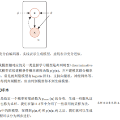Score-based generative models (SGMs) have recently demonstrated impressive results in terms of both sample quality and distribution coverage. However, they are usually applied directly in data space and often require thousands of network evaluations for sampling. Here, we propose the Latent Score-based Generative Model (LSGM), a novel approach that trains SGMs in a latent space, relying on the variational autoencoder framework. Moving from data to latent space allows us to train more expressive generative models, apply SGMs to non-continuous data, and learn smoother SGMs in a smaller space, resulting in fewer network evaluations and faster sampling. To enable training LSGMs end-to-end in a scalable and stable manner, we (i) introduce a new score-matching objective suitable to the LSGM setting, (ii) propose a novel parameterization of the score function that allows SGM to focus on the mismatch of the target distribution with respect to a simple Normal one, and (iii) analytically derive multiple techniques for variance reduction of the training objective. LSGM obtains a state-of-the-art FID score of 2.10 on CIFAR-10, outperforming all existing generative results on this dataset. On CelebA-HQ-256, LSGM is on a par with previous SGMs in sample quality while outperforming them in sampling time by two orders of magnitude. In modeling binary images, LSGM achieves state-of-the-art likelihood on the binarized OMNIGLOT dataset.
翻译:最近,基于分数的基因化模型(SGM)在抽样质量和分布范围方面都显示出令人印象深刻的结果,然而,通常直接在数据空间中应用,往往需要数千次网络评估才能取样。在这里,我们提议了基于低分分的基因化模型(LSGM),这是一种在潜在空间培训SGM的新办法,依靠变式自动校正框架。从数据转向隐蔽空间,使我们能够培训更显眼的基因化模型,将SGM应用于不连续的数据,并在较小空间中学习更平稳的SGM,从而减少网络评价和更快的取样。为了能够以可缩放和稳定的方式对LSGMS进行终端到终端的培训,我们建议采用适合LSGM设置的新的评分匹配目标;(二) 提议对评分功能进行新的参数化,使SGM能够侧重于目标分布与简单正常模型不匹配,将SGMS应用于不连续的数据, 分析地从培训目标中得出多种降低差异的技术。LSGMGM获得一个最先进的B-B级图像,同时将S-RO-ROGMS的GMS在S的S前两个S-CS-ROGMA中实现S-R结果。




